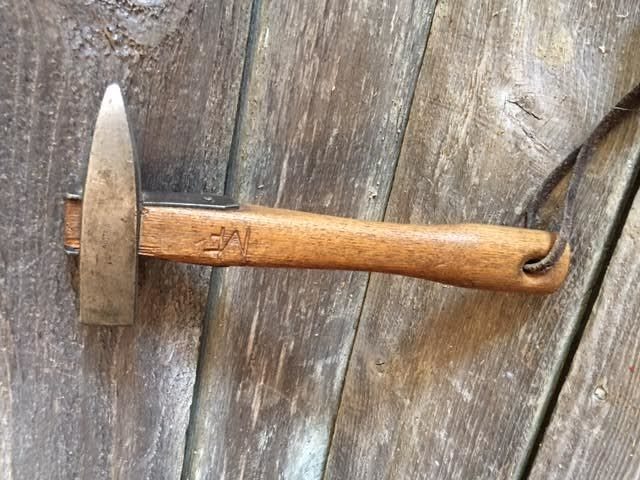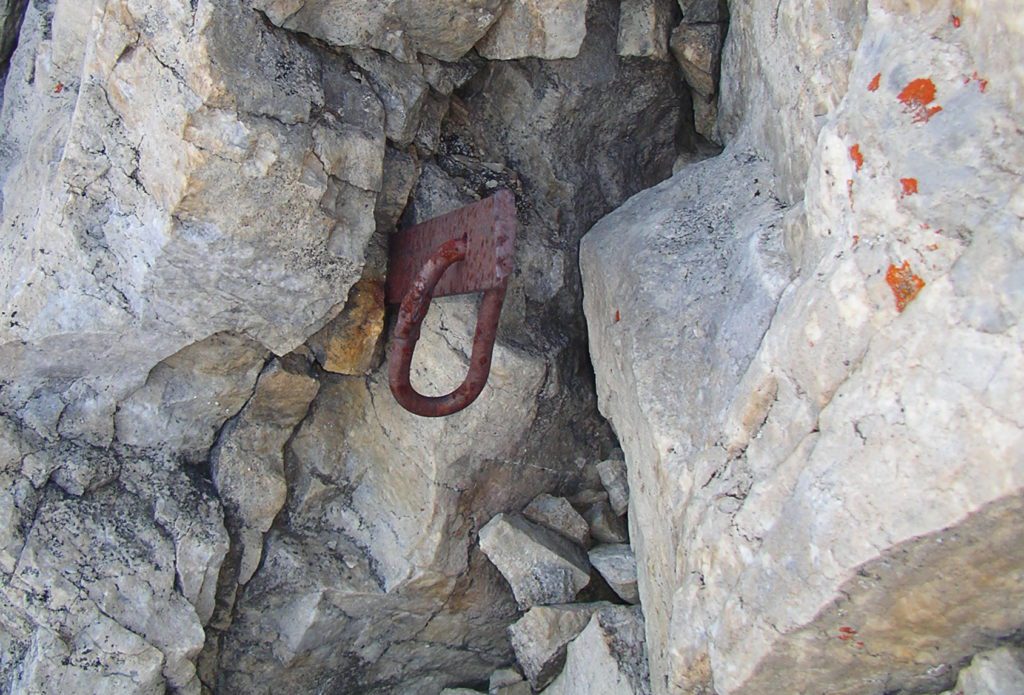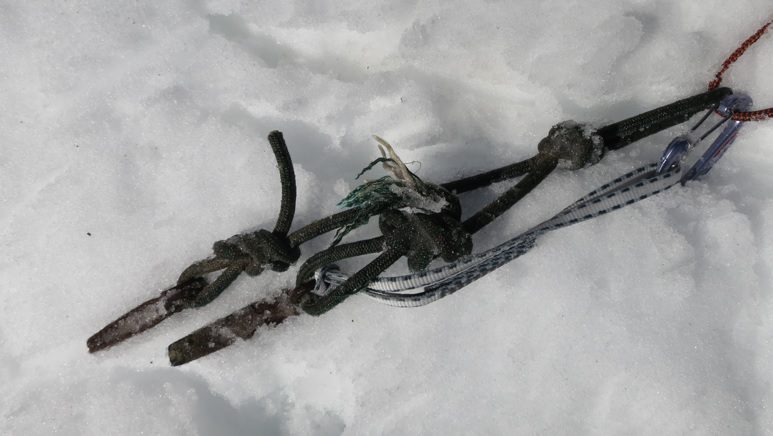Anchors Failing in Alpine, Bring a Hammer

Over the past few months, a number of anchors in the Canadian Rockies and American 14ers have failed, resulting in death and injury.
Most reports have not detailed the type of anchors failing or why, it can be assumed that they are old piton anchors, some of which have been there for decades.
In the past, climbers in the alpine carried hammers and even today, experienced alpine climbers carry hammers. What might be the case here is that inexperienced climbers who are comfortable at a gym or local crag are heading into the mountains without knowledge of protection, terrain and alpine grades.
While there are many factors that go into alpine climbing accidents, piton anchors ripping from the mountain should not be one of them.
If you’re heading up on a route that has piton anchors or pitons for protection, you should be bringing a hammer to hammer them back in. Most pitons loosen over time due to freeze/thaw cycles. Having a hammer is an easy way to hopefully make your ascent/descent more safe.

It’s not uncommon to come to an old anchor and find one of the pitons on the ledge below, because it worked out over time.
On the Middle Sister in the Canadian Rockies, a climber died this week when his anchor ripped from the wall and he fell to the ground, taking the ropes and leaving his three partners stranded, more here.
A few weeks ago, a piton pulled on the the First Sister, the peak next to the Middle Sister, injuring a climber and forcing a rescue.
A few years ago, ace alpine climber Colin Haley was rappelling on Mount Robson when two old pitons ripped out. Luckily Haley was close to the lower ledge, see story below.
In the CMC Valley, a number of 1970s piton anchors have fallen out, requiring a hammer to put back in.
Over the past few years, other popular routes have had pitons come out, including those on the Tower of Babel near Lake Louise, on classic routes up Yamnuska and even on granite peaks in the Selkirks.

On winter mixed/ice routes, climbers often have hammers on the backs of their tools and carry a selection of pitons. If you’re doing a summer alpine route with some ice or snow, bring an ice tool with a hammer on the back.
This summer alone, seven climbers have died on the American 14ers (peaks over 14,000 feet). The most recent accident was because an anchor ripped from the wall. One climber died, the other became entangled in the rope and survived on a ledge for 22 hours until a rescue, see here for more.
If you don’t have experience in the alpine, find someone who does or simply call a guide. Carrying a hammer should be commonplace if you’re spending your climb-time in the alpine where rusty pitons are your only connection to the mountain.
The below story is an excerpt from a longer blog by Colin Haley that you can find here. Great summary at the end.
“I went to what looked like the best place to set up a rappel, and low-and-behold, I found somebody’s old rappel anchor: a baby-angle piton and a lost-arrow piton, equalized with cord. The two pitons were placed in a crack that was nearly horizontal, but in fact angled about five degrees down (toward the outside).
“I couldn’t place any cams or nuts as backup pieces, as there were no other cracks. I could’ve placed another piton, but I was concerned about conserving my meager rack for lower down. I used the hammer on my ice tool to whack on both of the fixed pitons – One seemed totally solid, and the other went a millimeter or two deeper. I used a sling and a ‘biner to backup the old cord, and rigged my rappel rope. When I started rappelling I did what I always do on marginal rappel anchors – I kept my weight as low as possible, and rappelled smoothly and gingerly.
“The rappel was short but vertical to overhanging. Below the cliffband was a 30-degree snow-slope, so when I touched down on that I just kept rappelling, because if the rappel is already rigged it is faster than down-climbing, even on such low-angle terrain. I was quickly rappelling down this 30-degree slope when suddenly I lost my balance and nearly tripped.
“For a moment I didn’t understand what had happened, and then realized in horror that my rappel anchor had ripped out! As I had gone further down the 30-degree snowfield, the angle of pull on the two pitons had become closer and closer to directly out along the axis of the pitons. The terrain I was on was so easy that I didn’t even fall on my ass, but it clearly was a very close call.

“I consider this to my seventh way-too-close call in the mountains, and of course I am not proud of it. If the rappel anchor had ripped while I was rappelling the cliff band it’s likely I would have survived the fall, but being half-way up Robson’s west face, alone, injured, without any communication device, on a Tuesday in September, would have been a grim situation.
“I’ve made three major conclusions about this close call:
1) The direction of pull is VERY significant in the strength of a piton placement.
2) It is ABSOLUTELY worthwhile to keep your weight low and rappel with care on sketchy anchors. In this case it’s not unlikely that this practice saved my life.
3) What I should have done, considering that I was trying to conserve my meager rack, was remove both of the fixed pins and replace them. That would have cost me a few minutes, but no extra gear, and I’m sure I could’ve placed both pins solidly in that case.”


